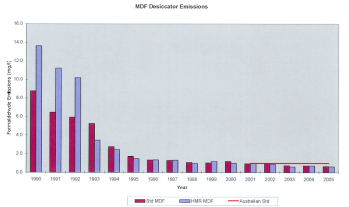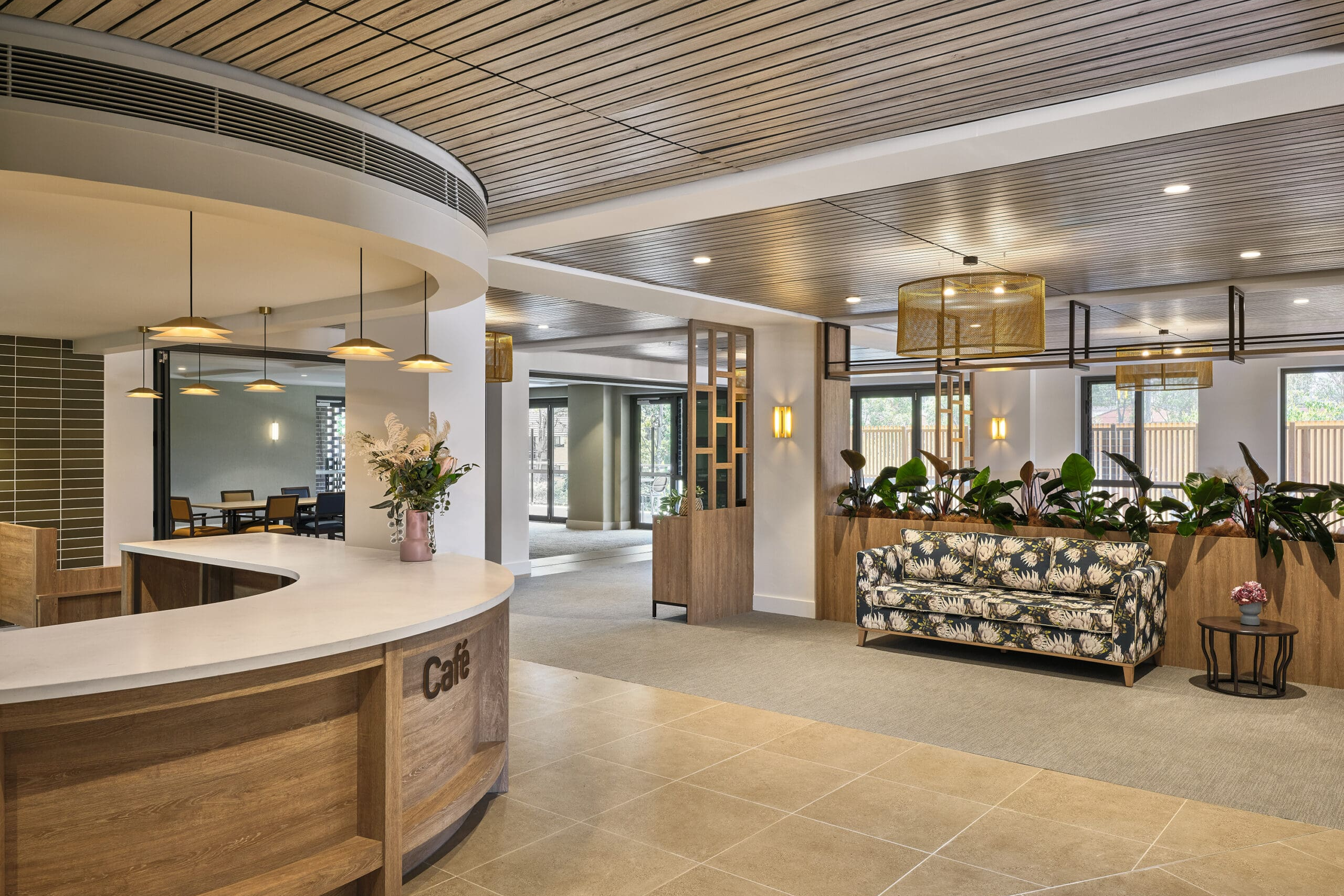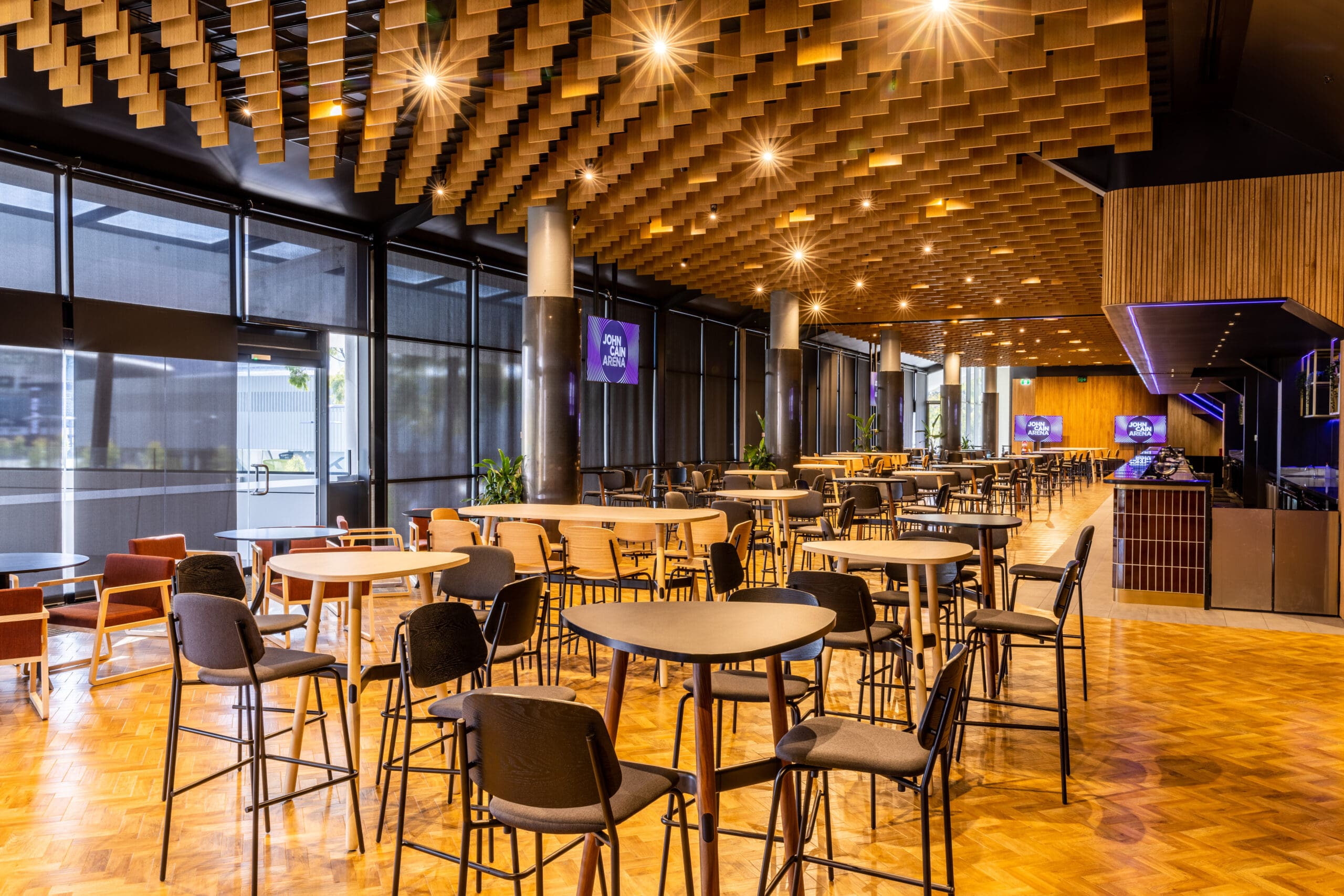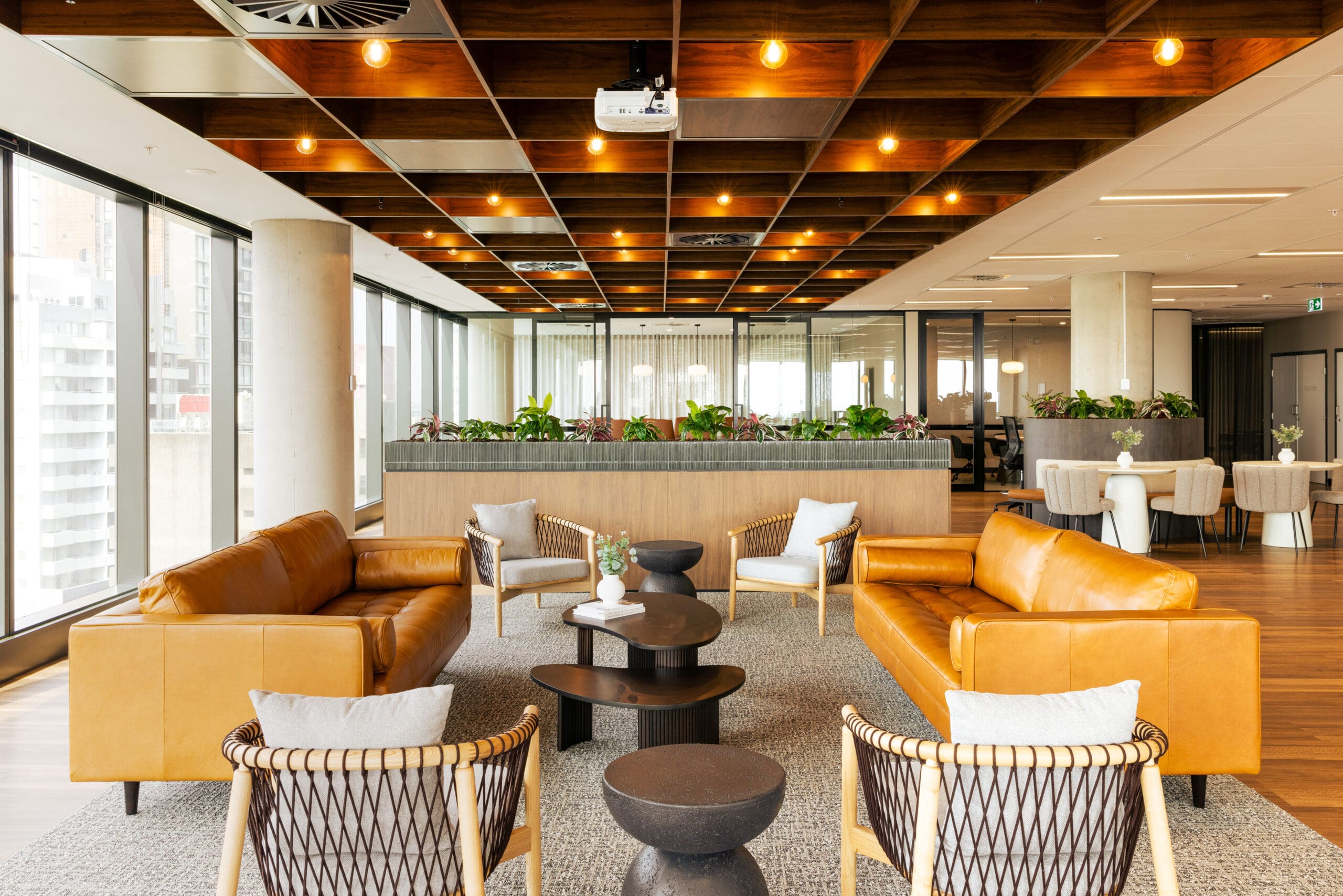MDF is short for Medium Density Fibreboard, and has been used for furniture and construction since 1966.
MDF has three advantages over architectural perforated metal panels as well as other wood products. It can be manufactured at almost any thickness, its surface is ideal for painting, veneering, or laminating and it can be cut or routed smoothly without splintering. This means complex shapes and patterns can be made easily, making it ideal for architectural mouldings, skirtings, architraves, recessed doors and acoustic panelling – any product that relies mainly on shaping for its utility.
For panel inspiration for your next project, and to explore what can be created with the MDF product, download our concept inspiration brochure. Make your mark with your next distinctive project design!
MAKE YOUR MARK
See your project vision come to life!
Why are persons concerned about MDF?
The unpleasant smell when MDF is freshly cut has arisen to concerns about VOCs and formaldehyde in MDF. These concerns have been voiced since 1987 – a period of 35 years.
The main VOC in MDF is formaldehyde, which is naturally occurring but added in the manufacturing process to the resin that binds the fibres in the MDF.
Formaldehyde is a naturally occurring chemical found in all living cells and has been used by man for more than 100 years. Today it is used in the production of hundreds of everyday products, including paints, varnishes, cosmetics, disinfectants, medicines and, of course, adhesive resins.
The remaining VOCs are all natural and come from natural tree sap. These (are not considered by health authorities to be harmful to people on any level) are not a worry.
The reason for the concern with formaldehyde is that it is present in the dust particles and the IARC (International Agency for Research on Cancer) have classified both formaldehyde and wood dust as human carcinogens.
However, it is important to note that the context in which this classification of wood dust was done was based on occurrences of nasal cancers in woodworking finishing trades such as French polishers, where the dust is fine.
In the case of formaldehyde this classification was based on occurrence of cancers in workers who had experienced high exposure, such as those using concentrated formaldehyde solution for preserving biological specimens.
In the case of a well-ventilated factory and protected workers, neither of these present a danger.
The Western Australia Guidance Note on Controlling wood dust hazards at work 2015 advises that “Small amounts of formaldehyde may be given off during the cutting or machining of engineered wood products, but this is seldom high enough to cause a problem.”
The WA Guidance Note also states “The main hazards occur where there is poor natural or mechanical ventilation.”
To prevent dangers from dust, Supawood factory workers are equipped with breathing and eye protection and the factory is well ventilated to remove dust and formaldehyde from the air. See more on working with MDF later in this article.
What government regulations affect where MDF can be used?
To comply with government regulations based on IARC’s ruling, the amount of formaldehyde used in Australian MDF, plywood, particle boards, or MDF perforated wall panel products have been reduced dramatically. This work has been overseen by the industry association, the Engineered Wood Products Association of Australasia (EWPAA), founded in 1934. See graph below showing levels of formaldehyde in MDF manufactured in Australia since 1990.
Due to these improvements, all MDF made in Australia is now E0 (ultra-low formaldehyde) or E1 (low formaldehyde). These levels of formaldehyde meet the most stringent requirements of the Green Building Council of Australia. SUPAWOOD uses only Australian manufactured E0 and some E1 boards and meet requirements for Green Star, Nabers, LEAD, BREAM and WELL.
By comparison, note that imported MDF, particularly from China and Malaysia, has been found to have six to 10 times the formaldehyde content of Australian-made products. This is yet another reason to avoid imported timber products, apart from supply chain issues.
MDF is allowed in food safe applications and for children’s toys (the only restriction even in Europe is regarding the paint you apply to the MDF).

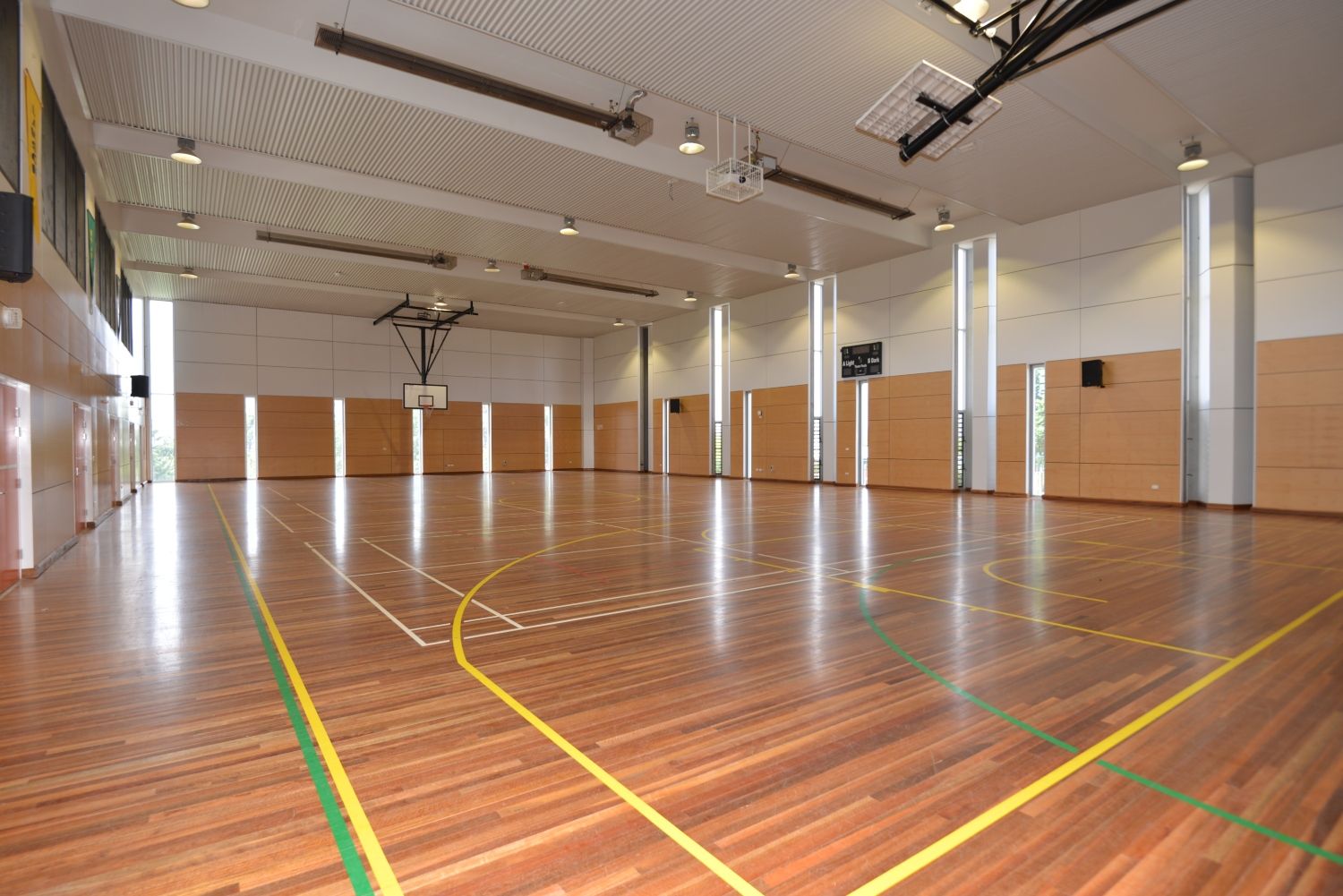
Why did the Department of Education restrict the use of MDF in state schools?
The Department of Education, or DOE, has restricted the use of MDF in state schools since the 1990’s.
However the reason that MDF timber wall panels and other MDF products have been restricted has nothing to do with formaldehyde or dust levels, but due to another strange concern altogether - termite attack.
What is unusual about this concern is that timber needs to have a 20% moisture content before termites will eat it. Therefore termite resistant timber is used for fence posts and other underground applications. However in an indoor environment, if you had any timber at all with a 20% moisture content – you would have a major water or moisture problem long before you would attract a termite attack. MDF has a moisture content of around 5%, and even solid timber is never more than 10% moisture in a normal indoor environment.
Having said that, the Department of Education is now allowing the use of MDF in its schools, even though it be on an exception basis. SUPAWOOD has been used in numerous schools throughout Australia for 22 years without termite or health issues.
Working with MDF
Cutting and milling MDF produces a lot of dust and fine particles which contain urea-formaldehyde, so wearing a mask is highly advised.
Cut MDF in a well-ventilated area and this means not indoors, or if indoors, have suitable extraction equipment and do it in an area separate to the rest of the house or factory. Fine dust from any timber or material is not good for your health, so take the same precautions you would normally take when exposed to fine dust. This includes using eye protection.
As a result of these dangers and in some cases due to union insistence, builders are now requiring MDF components to be prefabricated, or otherwise only cut in a dedicated, well-ventilated cutting room. SUPAWOOD has been supplying prefabricated kits inclusive of product and fixings, to fit to the frame, for 22 years.
Risk of cutting
As MDF has a high density and very even texture, it can produce a sharp corner, even on a 90-degree flat edge.
For this reason, sharp corners such as is found with table corners and edges need to be rounded to avoid cutting or other injury.
Supawood has recommended external corner details in the case of wall panelling that will prevent both personal injury as well as damage to panelling in these high wear areas.
In the case of schools and educational centres, we would recommend not using slotted or slatted panels within reach of children. Instead, perforated panels are more vandal proof and cannot cut anyone.
Conclusion
Have an MDF wall panelling idea you’re looking into? To make sure your architectural specification is as safe as possible, be sure to include the following:
- E0 or E1 MDF
- Low VOC paint
- Specify rounded edges for MDF details that could present a danger of cutting due to their position and application
Remember, MDF is one of the most environment-friendly products you can use, see >>> https://www.supawood.com.au/tech-info/green
MDF removes carbon from the atmosphere due to the sequestration of the carbon that the tree has captured. The carbon it removes this way is more than the carbon produced in its manufacture and disposal. For a full EPD on Australian MDF, see >>> https://epd-australasia.com/wp-content/uploads/2018/04/epd563-Medium-Density-Fibreboard-v1.1.pdf
MDF removes carbon from the atmosphere due to the sequestration of the carbon that the tree has captured. The carbon it removes this way is more than the carbon produced in its manufacture and disposal. For a full EPD on Australian MDF, see >>> https://epd-australasia.com/wp-content/uploads/2018/04/epd563-Medium-Density-Fibreboard-v1.1.pdf
For panel inspiration for your next project, and to explore what can be created with the MDF product, download our concept inspiration brochure. Make your mark with your next distinctive project design!
